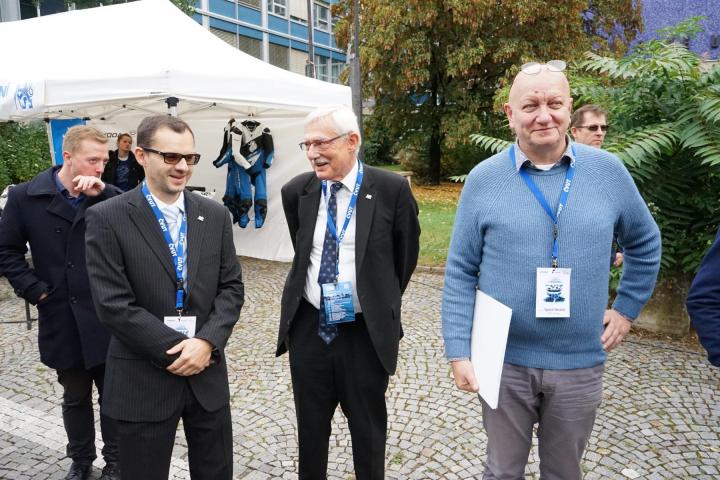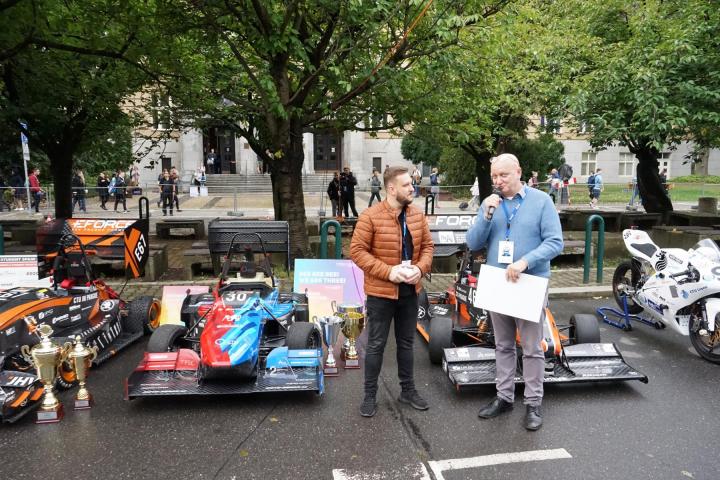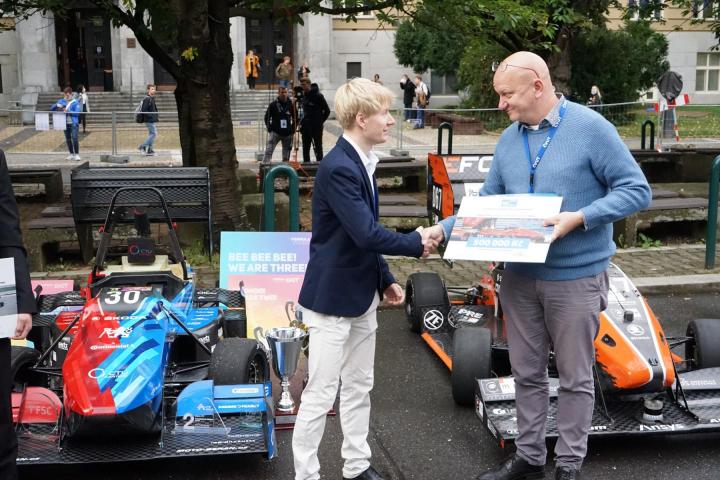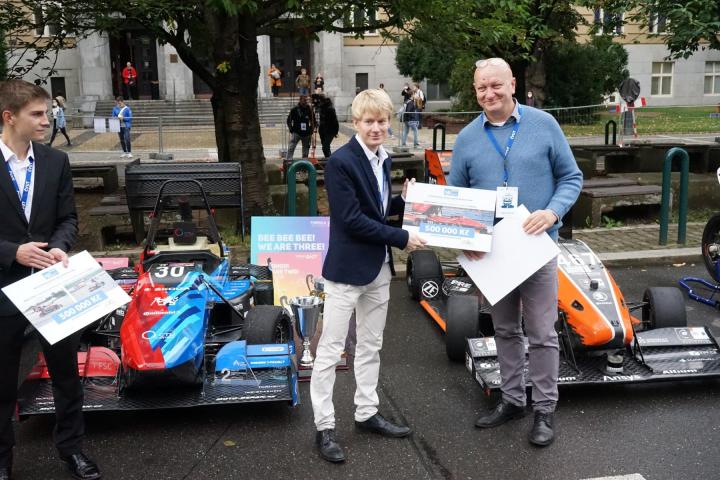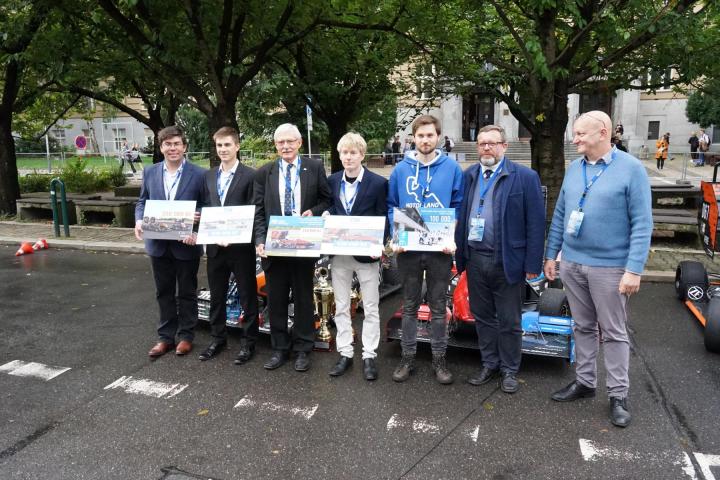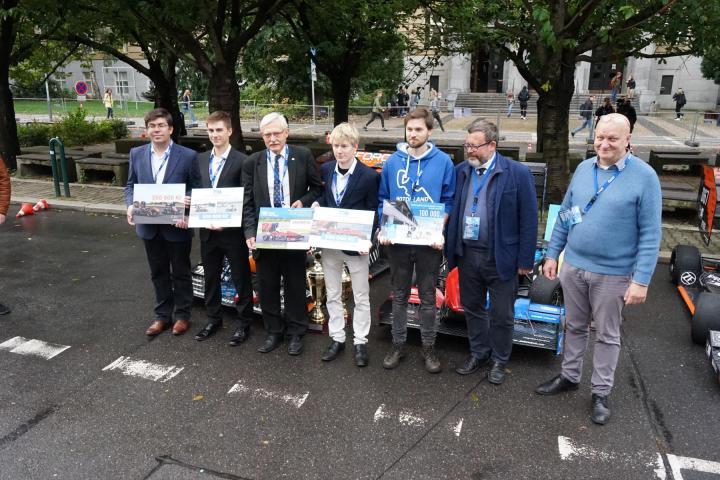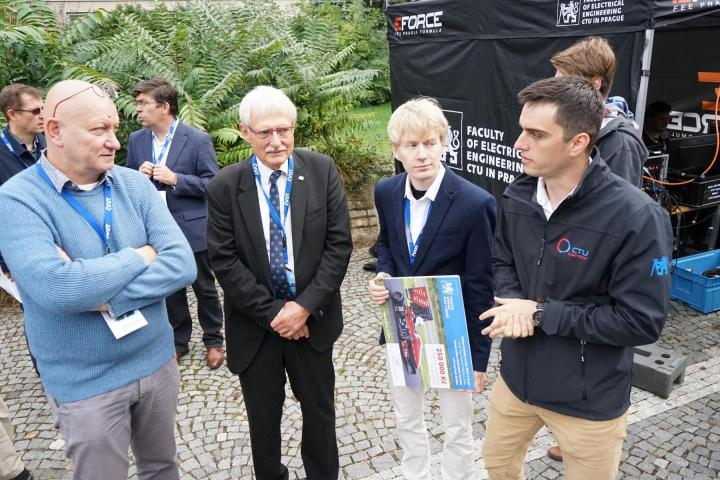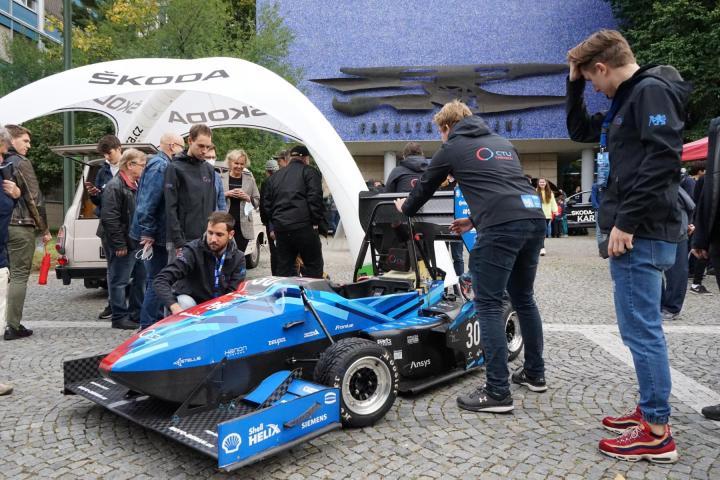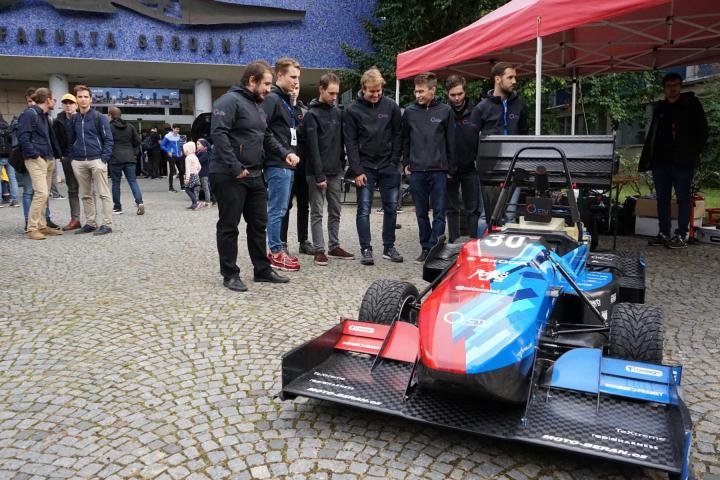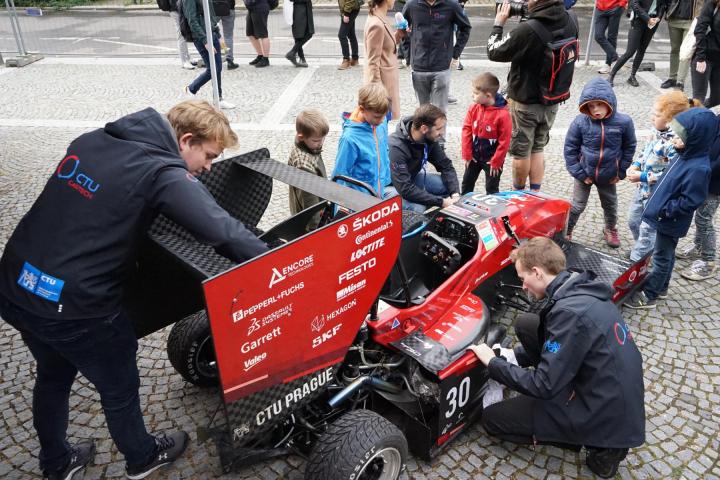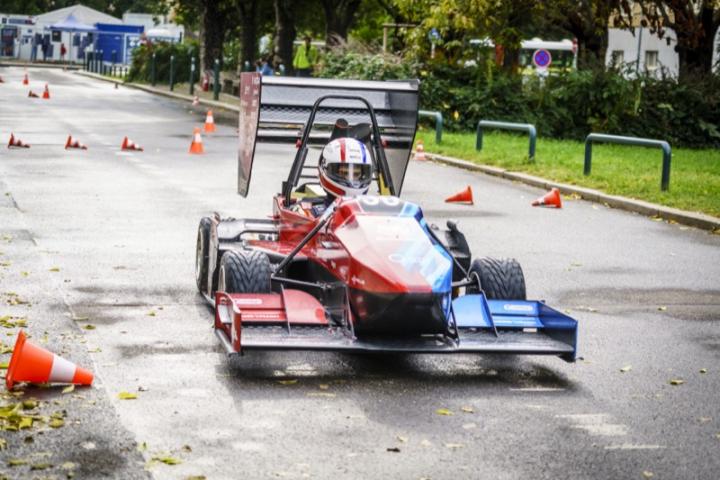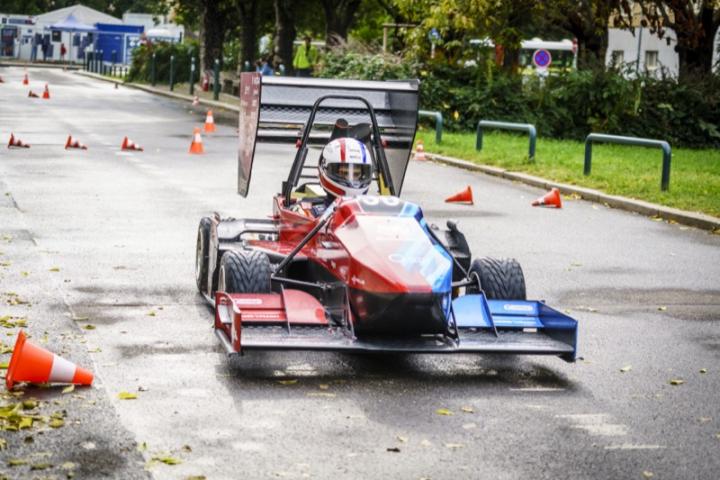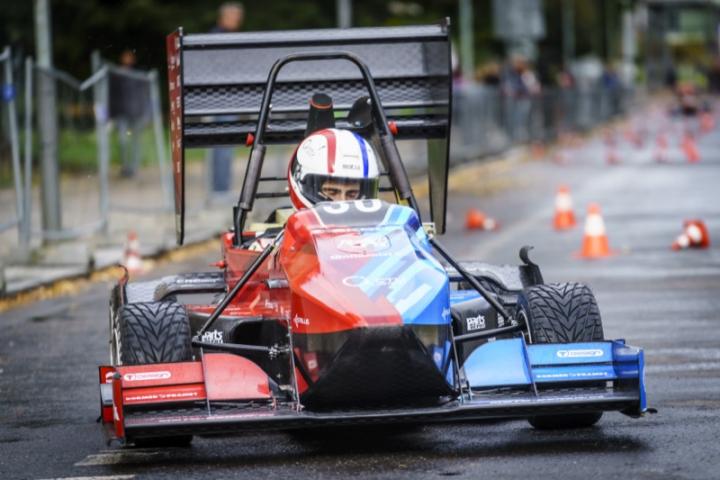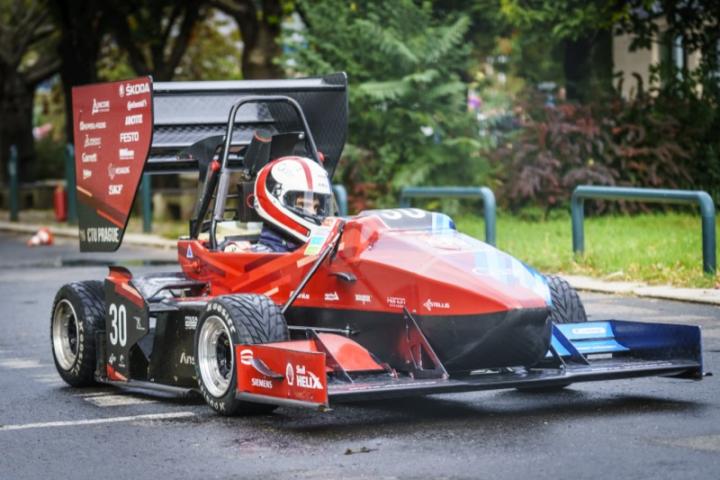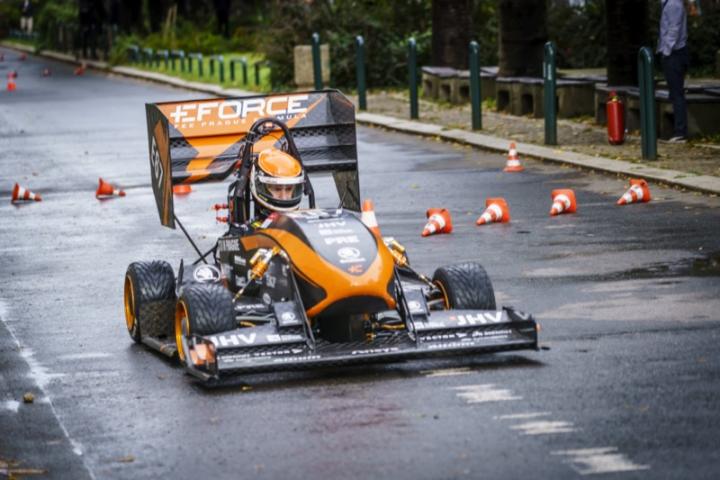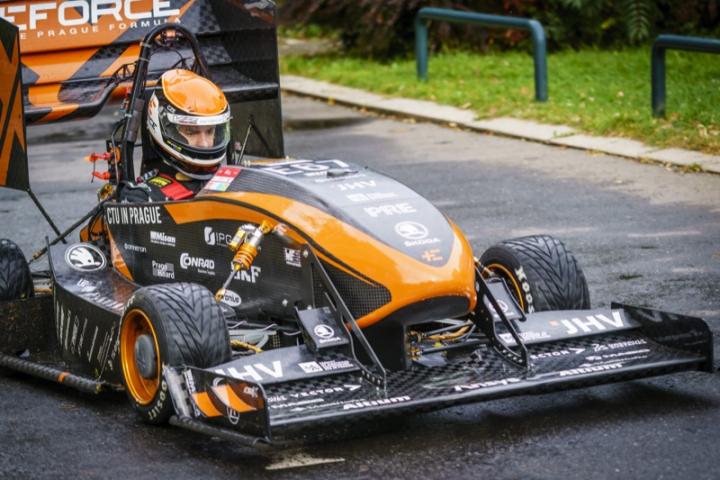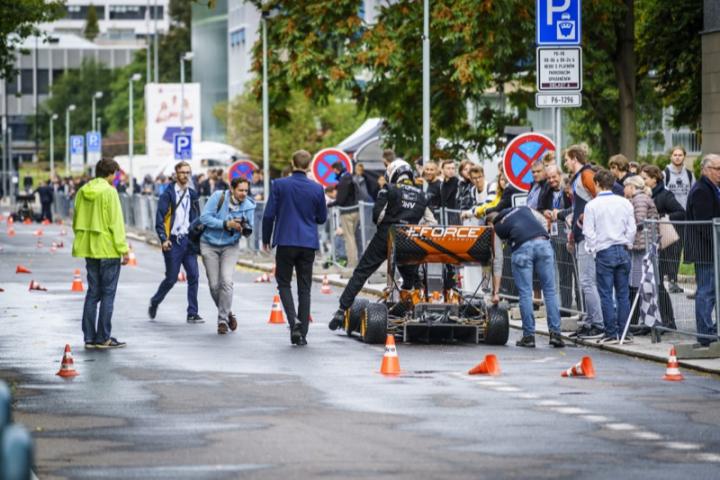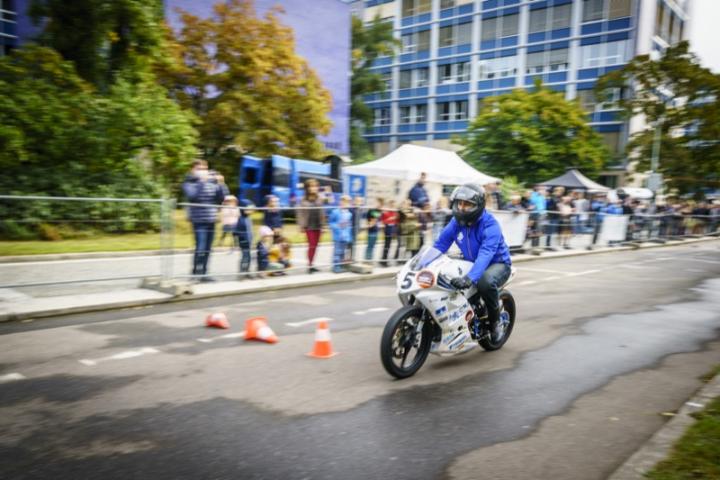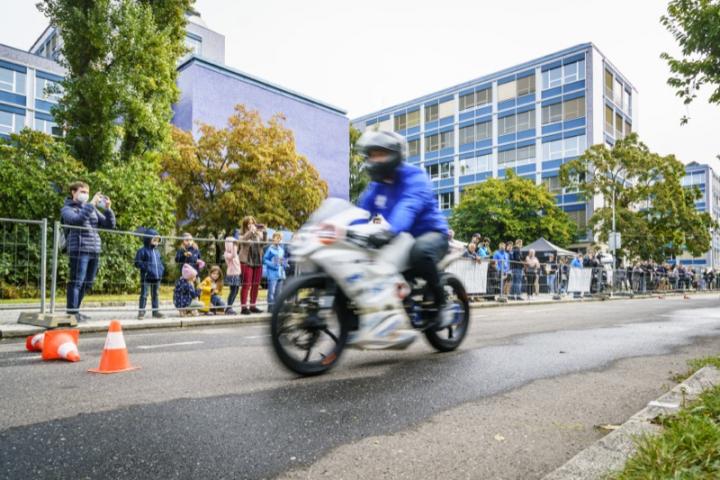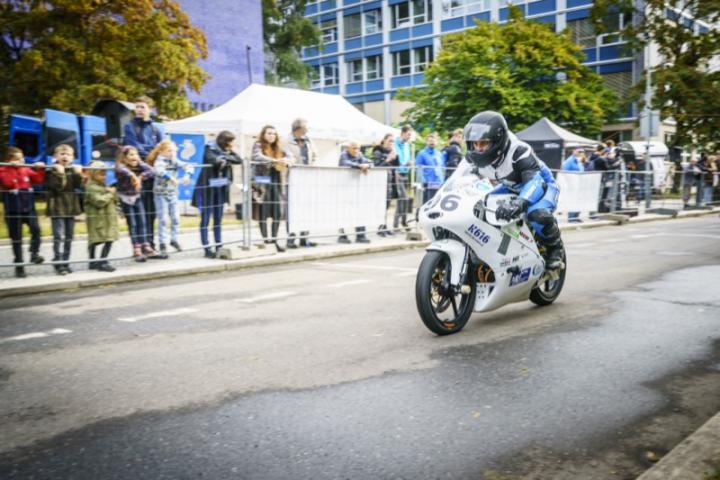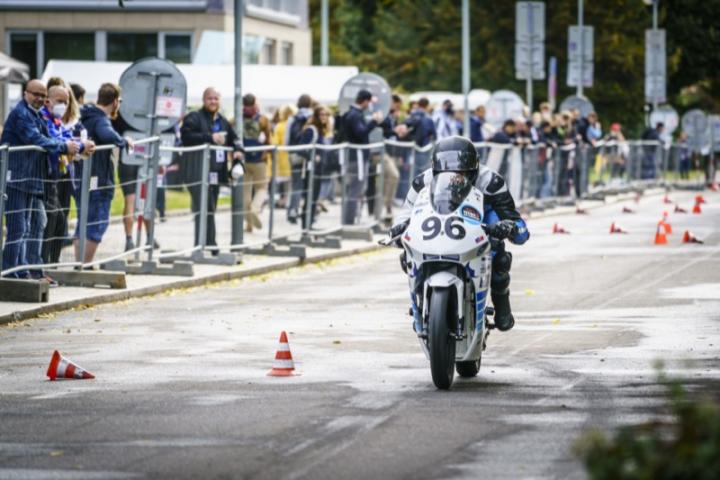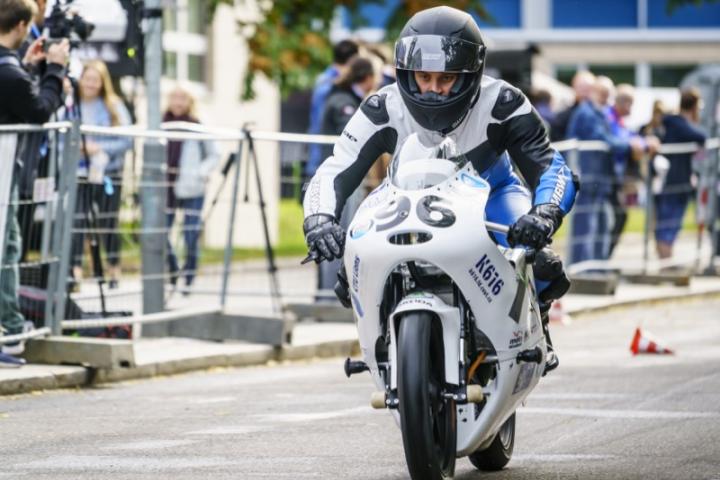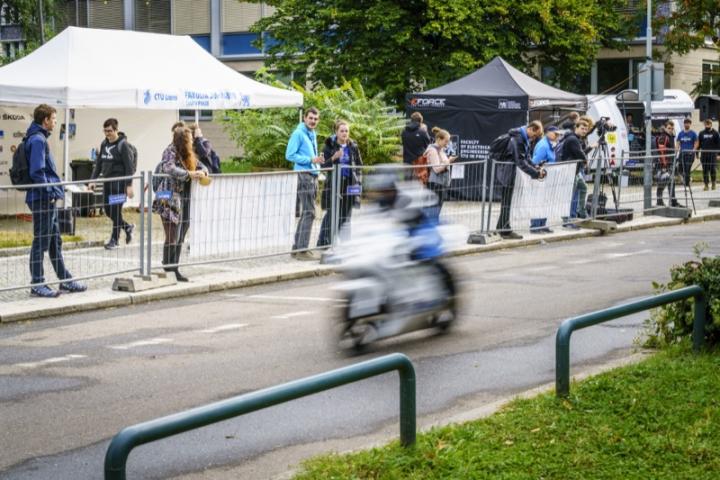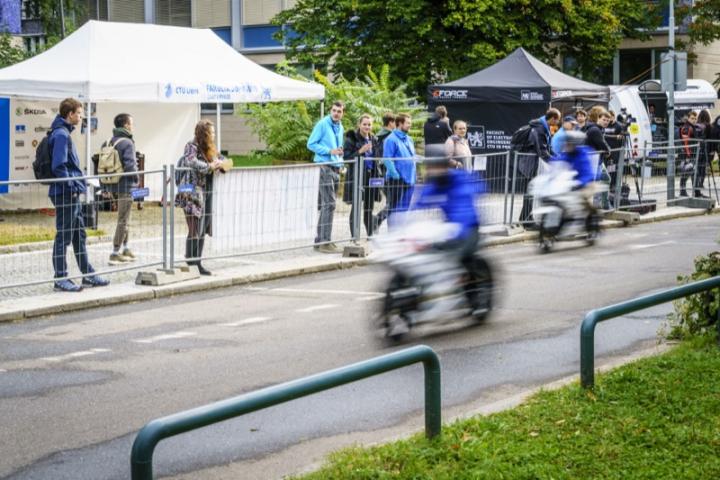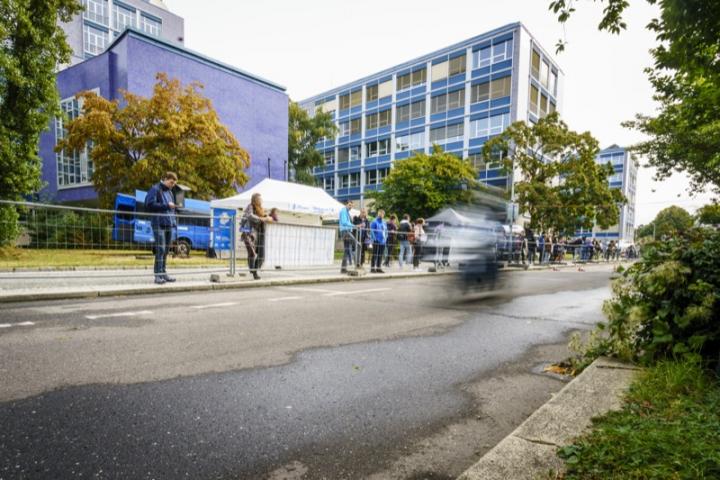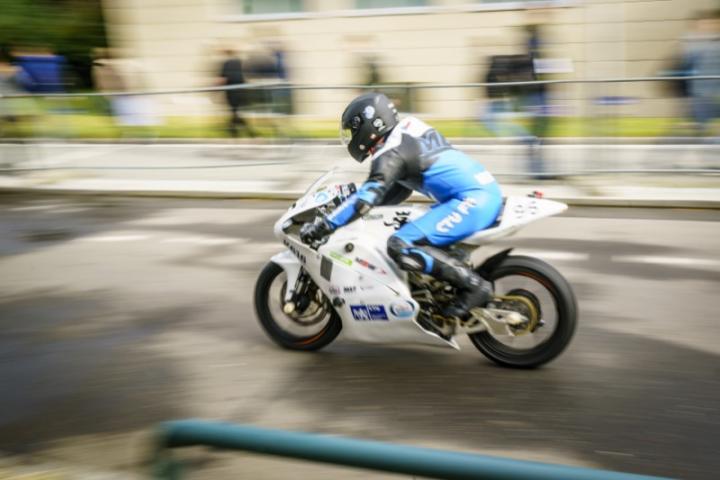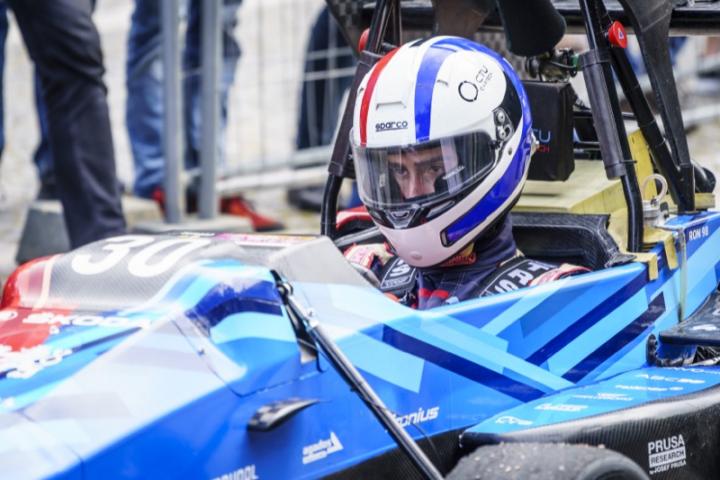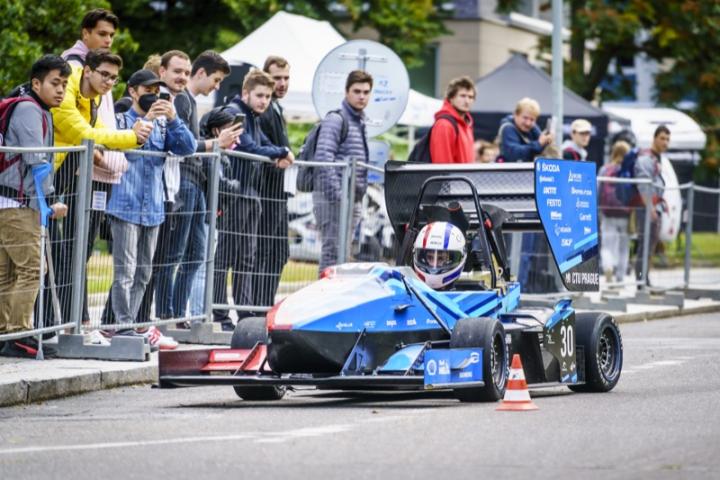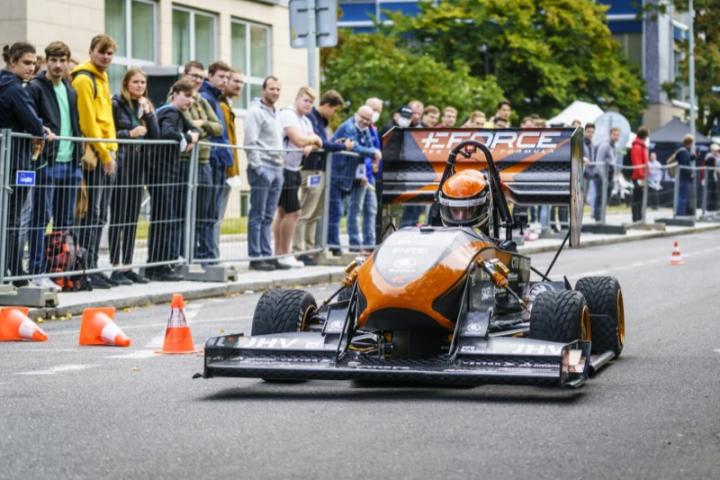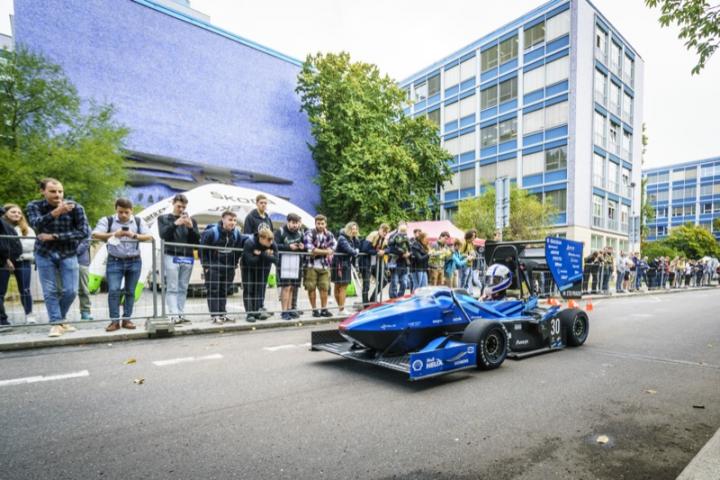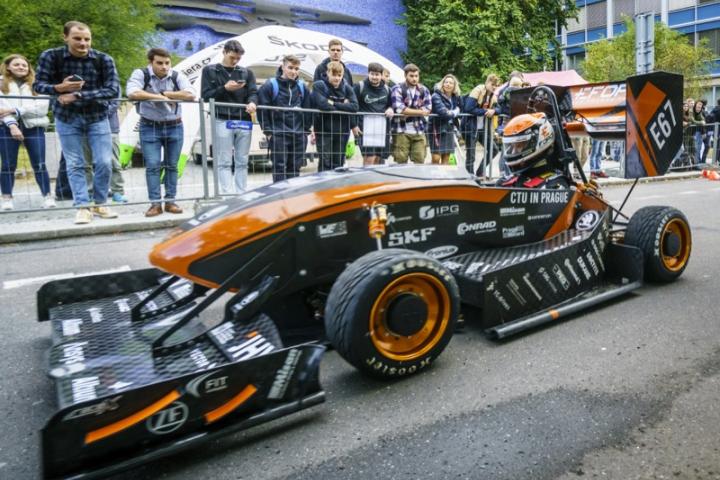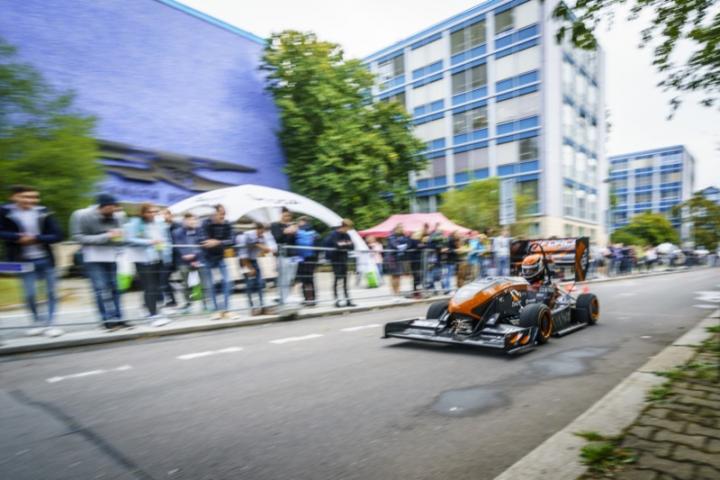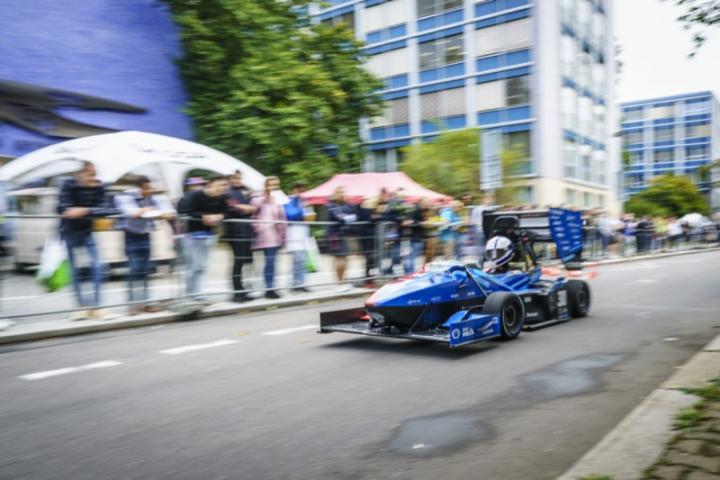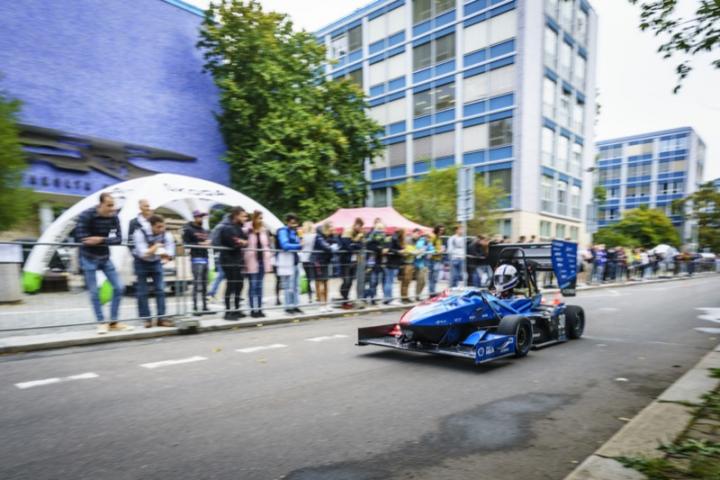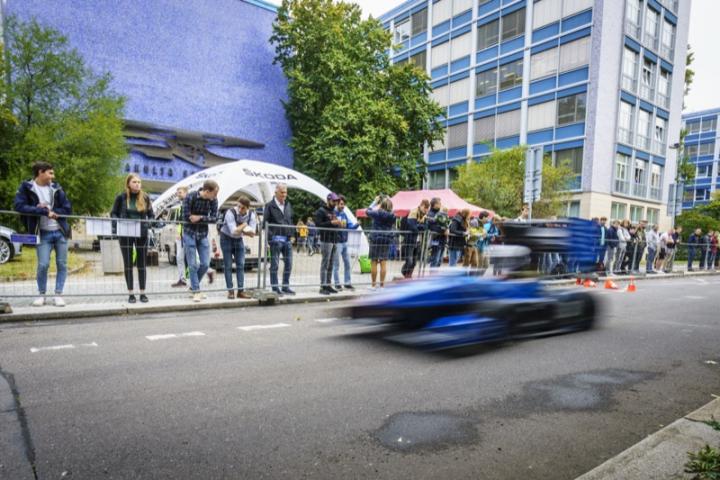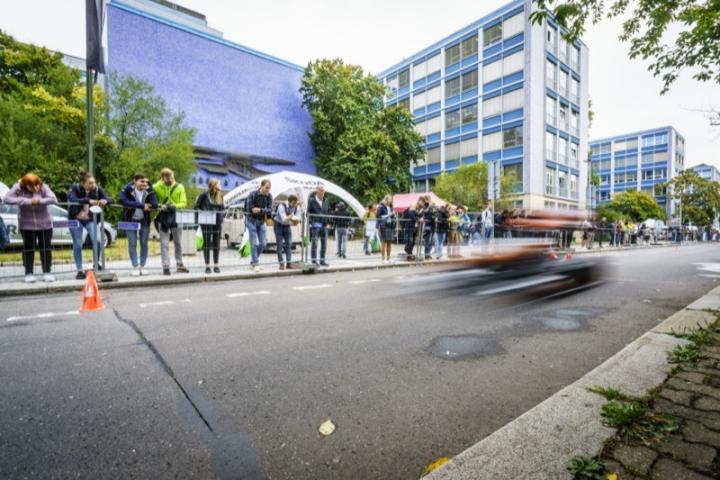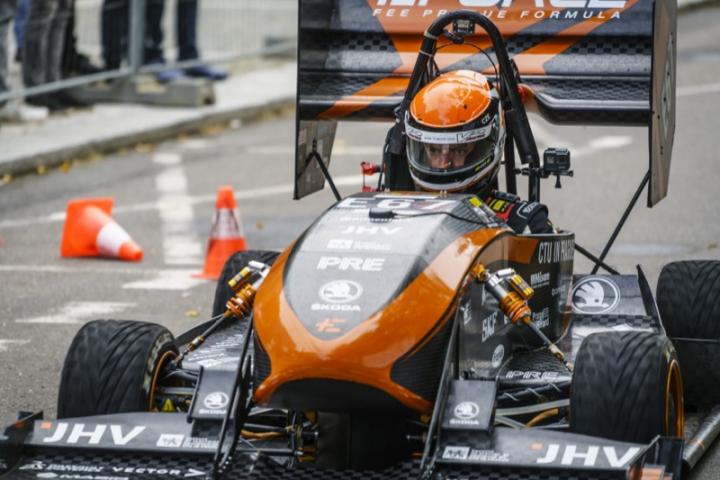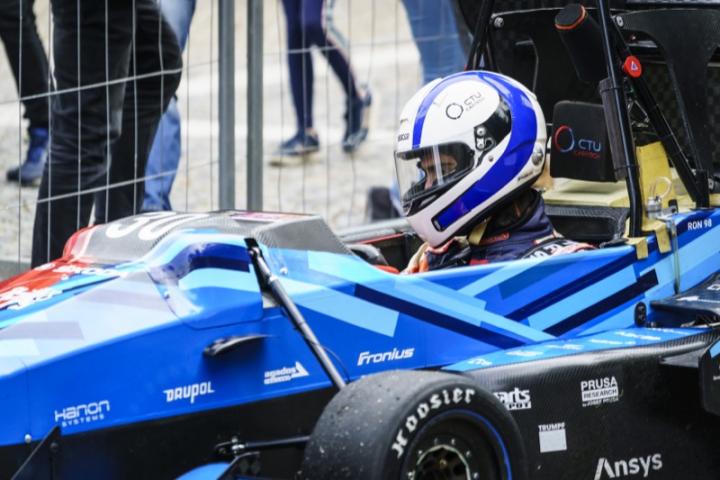
The Dejvice campus of CTU in Prague hosted the traditional CTU Racing Day, where representatives of individual student teams CTU CarTech from the Faculty of Mechanical Engineering, eForce FEE Prague Formula from the Faculty of Electrical Engineering and CTU Lions from the Faculty of Transportation Technology presented their monoposts and presented their results of this year's season 2021.
The eForce team presented its tenth anniversary generation of the FSE.X student formula and the DV.01 autonomous monopost. The team took part in five races during the summer season, building on a successful pre-season. The FSE.X piloted car managed to win a total of two second places in races at the world-famous Spanish circuit in Barcelona and in its debut participation in the Croatian FS AlpeAdria. "With the autonomous formula, we have achieved a historic success, finishing third among strong competition at the FS Czech race at the Most circuit, and with both teams we have participated in the most prestigious race at the Hockenheimring in Germany for the first time this year," said Josef Med, captain of the eForce FEE Prague Formula team.
The CTU CarTech team with its FS.13 monopost, which has been significantly upgraded for this season, started the season by defending its victory at the Czech FSCzech race in Most, where it had the fastest monopost of all the teams in the Autocross and Endurance disciplines. At the Hungarian FSEast at the Hungaroring, CTU CarTech finished third overall in the world competition. "At the third FS Alpe Adria race in Croatia, where the FS.13 dominated again in two dynamic disciplines, our team missed out on the championship due to a technical steering fault. In the end, despite losing points from the main discipline, we finished fifth overall," says Jaromír Šolc, spokesman for the CTU CarTech team.
Last but not least, the CTU Lions team, which is the only one in the Czech Republic participating in the international student competition MotoStudent, presented their prototypes at the event. "This year we have successfully completed the construction of our new EVO 2.0 Electric prototype, which stands out from the competition mainly due to its longitudinally positioned engine and the coaxial arrangement of the rear swingarm and drive sprocket," explains Přemysl Toman, head of the CTU Lions team. With the above-mentioned motorcycle and its entire project, CTU Lions placed 12th overall out of 45 international participants at the final MotoStudent competition in Aragon, Spain. In the sub-categories, it is worth mentioning the 15th place in the main race, the 8th place in the variable wheelbase innovation and the 1st place in the business plan discipline.
In addition to their results, the teams also presented the technical design of the monoposts to the participants. The main attraction of the event remained the traditional demonstration rides of all formulas and motorcycles on the closed Technická street in front of the CTU buildings. Interested students had a unique opportunity to join the teams and work with them on new machines for the upcoming season. For those interested in joining the teams who were unable to attend the event, the entire event was streamed online via the YouTube platform, where footage is now available.
The Formula Student Competition
Both teams, CTU CarTech and eForce FEE Prague Formula, constructing racing monoposts, participate in the Formula Student competition, whose races are held all over the world. Students compare their strengths not only in driving disciplines, but good results in presentation disciplines are equally important for overall success. Students present a technical design of a racing car, as well as a cost study or a business plan, for example, where they try to offer the product to potential investors. The competition reflects current industry trends and students are often ahead of the curve with their innovations.
The Motostudent Competition
Motostudent is an international competition for student teams. The challenge is to develop and build a racing motorcycle according to the rules given by the organizer, similar to the Moto3 category. One season runs for two years. Technical reports on topics such as Concept development, Detailed design, Innovation project, Business Plan and Prototyping are submitted successively. The reports describe the entire development process from the first sketches to the testing of the developed prototype. The season culminates with the final event at the Aragon circuit in Alcaniz, Spain. The finale includes static, dynamic and administrative technical acceptance, presentation of the reports to a panel of experts, and testing by a professional driver. Riders compete successively in dynamic disciplines of acceleration, braking and skill tests, as well as on track in capturing the fastest lap, top speed, qualifying position and the prestigious final mass start race on a full MotoGP configuration track. In addition to the main competition, the CTU Lions also participate in the MotoEngineering Cup series, which is designed for the successfully tested prototypes of the MotoStudent competition to further compare their motorcycles at other Spanish circuits.
Quick facts about student formula cars
Combustion formula car FS.13 of the CTU CarTech team
The FS.13 is the result of two years of work during a pandemic when no races were held. The CTU CarTech team was one of the few teams to adopt the strategy of building a monocoque during the non-racing season just to test new components and train the service team and new drivers. This way, the predecessor of this year's monopost, a formula called FS.12, was created. This journey, although quite time-consuming, proved to be decisive at the races and provided the team with a wealth of testing data and new experiences for the team to successfully capitalize on at this season's races.
The FS.13 features a new front suspension and damping system that isolates the knock and vertical components of the driving forces. This allows the car's behaviour to be adjusted more precisely and quickly so that pilots are able to get the most out of the monopost's mechanical grip in all disciplines. Modifications to the front axle also meant switching from a pullrod system to a pushrod system, placing the suspension system at the top of the car. This also freed up space in the lower part of the car, allowing more airflow to the aero floors and wings on the sides of the cockpit. Thanks to this and other aerodynamic package optimizations, our aerodynamics group was able to increase the overall downforce by up to 20.4% compared to the last monopost tested on the race track.
The propulsion unit - the engine from the Yamaha R6 motorcycle - features custom-designed cams for a better power curve. From previous years, we've adopted the design of titanium calipers and exhaust, carbon intake and an overall reduction of 30mm by using a dry sump with an external lubrication circuit. All these modifications contribute to a maximum power output of 59 kW, which is transmitted to the rear wheels via a new four-speed gearbox. The semi-automatic paddle shifters under the steering wheel are used to change gears and have undergone considerable optimisation, thanks to which we have been able to significantly reduce shift times. In racing mode, petrol consumption reaches 18 l/100 km.
Low weight and low moment of inertia are critically important in a racing monoposto. The use of carbon wheels together with low-profile tyres has saved up to 8 kg of rotational mass at the furthest point from the monopost's centre of gravity. Together with other structural modifications throughout the car, the total weight stopped at just 187 kg.
The Autonomous formula car DV.01 of eForce FEE Prague Formula team
In the 2020 season, the team has designed the first ever autonomous electric formula in the Czech Republic. The self-driving monoposto was created using the mechanical design of the FSE.07 monopost acr, but it has been completely rebuilt electrically. The newly formed group in the team had to deal with many new problems, such as sensing and recognizing the surroundings, calculating the ideal path, the steering itself or the emergency braking system.
This season, the stereo camera and LiDAR remain for cone detection. We have replaced the main computing unit with a more powerful Zotac MAGNUS EN72080V, which allows us to process the sensed data faster using neural networks. The wheel steering has remained mechanically the same, but thanks to the power steering located directly in the vertical steering rod, we are now able to precisely correct the direction of the formula. The result of all the efforts and improvements is a monopost that meets all autonomous rules and is capable of autonomous unmanned driving.
The Electric formula car FSE.X of eForce FEE Prague Formula team
The 2021 season for the team's piloted division meant a completely redesigned concept car compared to last year's FSE.09 model. The battery is now located under the pilot's feet, and we've reduced the moment of inertia by 12% thanks to a better layout of the other units in the car as well. Lighter and shorter, by a significant 45 centimetres, is the carbon monocoque sandwich design carrying a completely new chassis along with wheel arches. The Fisher motors are now located directly in all four wheels set in topologically optimised 3D printed aluminium extractors. All this is followed by an optimised aero package with several adjustment options.
The changes in the electronics are far from over with the placement of a smaller and 10 kg lighter battery. These savings could be achieved by using new cell types and, for the first time, by using a regeneration system. The entire traction system now operates at a higher voltage of 600 V, thus achieving lower interference, lower losses and lighter wiring.
Quick facts about student motorcycles
All motorcycles correspond to the Moto 3 category. The team unveiled a new CTU Lions EVO 2.0 Electric prototype with a longitudinally mounted engine mounted on a custom cast and machined gearbox with a spiral gear to provide a 90° change in rotation of the engine's main shaft. The gearbox itself also forms the main hub of the entire frame, including the rear overtravel suspension and the stowed rear swingarm, which is coaxial with the output drive sprocket. The frame is a "3D puzzle" of welded aluminium plate forgings. The frame is completed by the technological innovation of the variable wheelbase hidden in the interchangeable inserts of the upper glasses combined with the rotation-enabled lower glasses. The main advantage is the speed of changing the front fork angle within minutes. The motorcycle has a peak power output of up to 42 kW at 8000 rpm, with a battery pack of 7 kWh. capacity, a maximum voltage of 118V and a current load of 550A. The battery pack itself is made up of 868 cells running through the entire frame, which makes up the entire battery pack and onto which the front fork and neck and swingarm gearbox and drive unit are then bolted.
Previous generations of motorcycles were also on display. The EVO 1.1 Electric with a Montenergy engine and air-cooled controller and 110V battery box with a maximum load of 450A, as well as a tubular steel frame with aluminium sidewalls and a total weight of 155kg . EVO 2 Petrol with a KTM 250 RC engine with a tunable control unit, tubular frame with chrome-molybdenum steel and a total weight of 115 kg. EVO 1 Petrol with a Honda 250 CBR engine and a tunable control unit, tubular steel frame with aluminium sidewalls and a total weight of 125 kg.
Photography, courtesy of: Fakulta strojní ČVUT and Jiří Ryszawy

